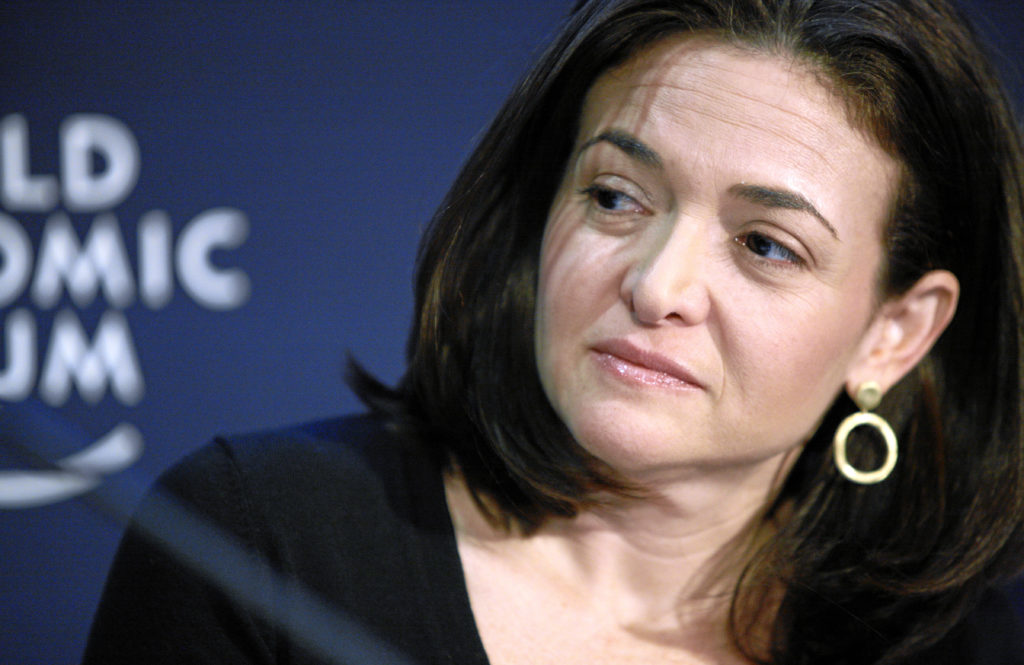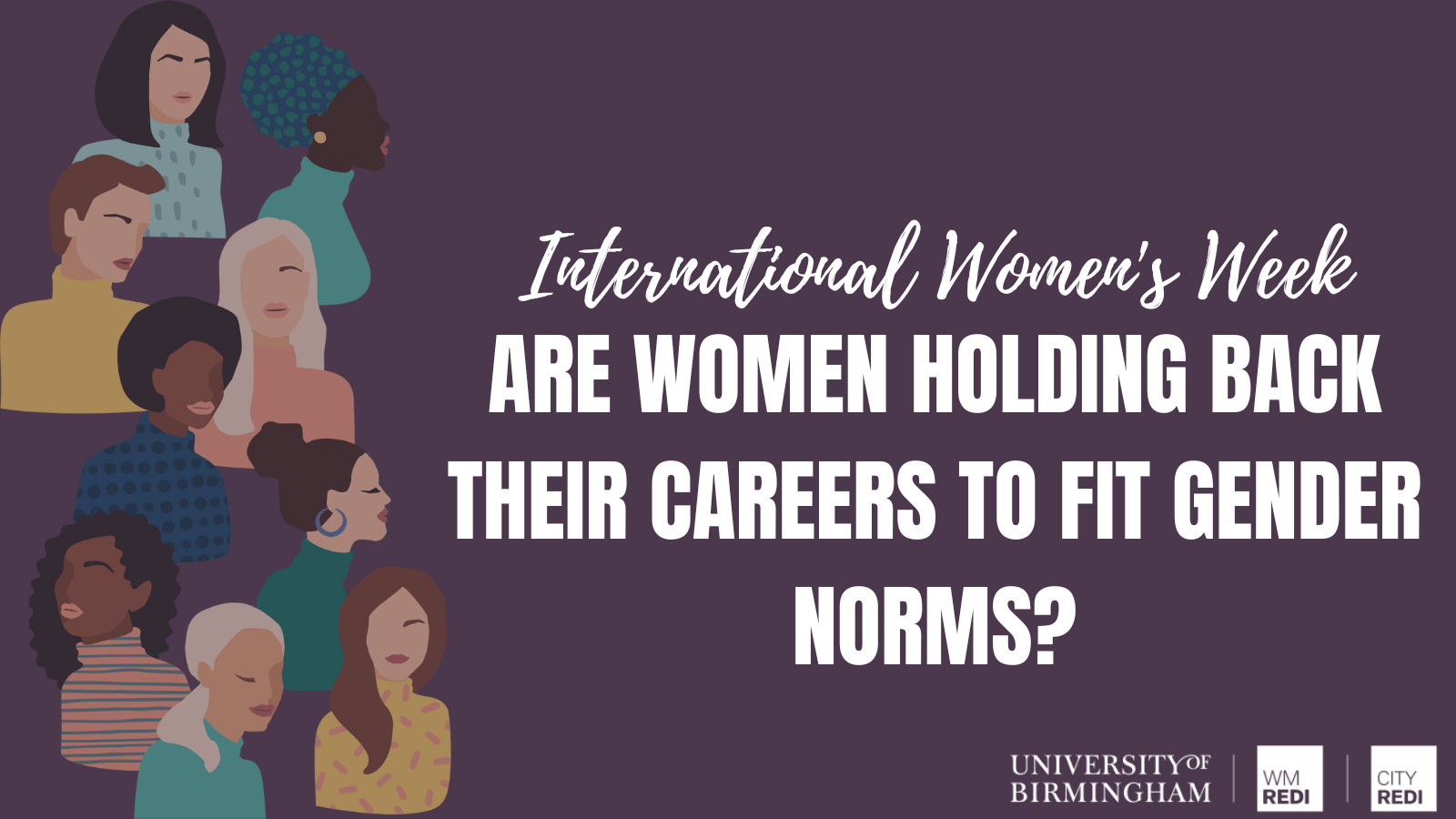Rebecca Riley discusses whether or not women hold back in their career plans to fit gender norms and if they feel uncomfortable earning more than their partner or male counterparts. This blog is part of an International Women's Day series.
The World Value Survey, says 36% of Americans agree with the statement “if a woman earns more money than her husband, it’s almost certain to cause problems.” In the European Union, this view is shared by 39% of the population. Even in a country like Finland, which is generally more liberal, 34% agree with this view.
The percentage of households in the UK in which the female partner earns more than the male partner has steadily risen from 19.8 per cent in 2004 to 23.3 per cent in 2019.
The drop in the distribution
Marianne Bertrand and co-authors argue that this norm may put women with high-earning potential at a disadvantage, affecting the formation of couples. It may also restrict high-earning married women, forcing them to reduce their working hours. The drop in the distribution of relative earnings seen in the data, Bertrand suggests, reflects that couples are particularly keen to avoid the situation where the wife just out-earns the husband. This article has been widely cited both in the media (including in the New York Times, here and here, and in The Economist) and in academia. But are women in relationships really holding back their careers because of gender norms?
The convergence of roles
Goldin, suggests that the convergence of roles of men and women has been ‘among the grandest advances in society and the economy in the last century’. There has been a narrowing of gendered differences in paid hours, hours of domestic work, lifetime workforce experience, occupations, university courses, access to education and there has been a convergence of earnings alongside this. The author highlights how the next step for real equity is flexibility, how work is structured and firms valuing work-life balance. Post-pandemic the demand for this flexibility is rising across both genders and we are seeing record retirement and job churn. The older workforce is leaving the job market and part-time, flexible working is one of the solutions to helping people stay in employment longer.

Work by the London School of Economics has highlighted that this gender pay gap convergence phenomenon is skewed by a specific group of couples the 15% of working couples – those women who work with their husbands and casts doubt on the interpretation of women conforming to earnings norms. They found that the distribution drop described by Bertrand happens when a couple run a business together, work in the same large firm, or has similar occupations, and are likely to have similar earnings, either because they are in comparable jobs or for tax purposes. This fits with relationships being formed in university or through work. After couples start to work together their earnings converge and this breaks the distribution pattern seen in the rest of the population.
This raises an interesting question about who these equal-earning couples are and how this equalisation phenomenon plays out. It is difficult, however, to find these couples in real life, especially at lower income levels. Some high-earning, influential couples do give us some insight into the shared backgrounds, education, values, insights, and skills that draw people together in supportive relationships, which can catapult women into important positions.
Women as CEOs
Marion O. Sandler of Golden West Financial Corporation (GWFC) became the second CEO of a Fortune 500 company in 1974 and stayed on the list until 1994. In 1995 there were no women, as GWFC dropped out of the 500, but she re-entered in 1996, the company went in and out of the top 500, with Marion as CEO until 2006 when the company was sold, her last year in the top 500. She remained one of only 2 women consistently in the Top 500 for nearly 30 years. Marion was Co-CEO of the company with her husband, and they built and established the company to have assets of over $125bn and 12,000 employees. They founded the Centre for Responsible Lending and the Centre for American Progress and worked together to build philanthropic investments until their deaths.
Since those early days, the number of women CEOs has grown, in 2023 among the top 500 companies only 41 women (8.2%) held the CEO position. Many of these women have husbands in the same industry in supportive roles or in equal roles in other companies. Mary T Barra CEO of General Motors (GM), the highest-ranking woman in the 2023 top 500, followed her father into the company, and she worked her way up through GM. She met her husband Tony at university, he is a consultant and has held various senior positions (President/Partner) in technology and consultancy firms. They both have senior jobs and, although given the size/value of GM, Mary will earn more, they have equally high-flying roles.
Flexibility and “Seesaw marriages”
Also in the top 500 is Jane Fraser CEO of Citi, whose husband (Alberto Piedra) was also a banker (Head of Global Banking for Dresdner Kleinwort, and prior to that Head of Bank of America’s financial Institutions group in Europe) but gave up his role in 2009 to support Jane. However, he continues with a portfolio career, including serving on the Board of Dean’s Advisors at Harvard. He is quoted as saying a successful banking career requires “opportunism and adaptability” something he seems to have applied in supporting his wife since 1996.
Former First Lady Michelle Obama calls her marriage a “seesaw marriage” with them each taking turns to step back and support the other at various points in their career. Michelle put her law career on hold to be the first lady, and now it’s Barack’s turn. She was an active First Lady and changed the shape of the role. She wrote in her memoir that they were two people in a full-on merger, with the well-being of the family taking precedence. Similarly, Jill Biden is the first president’s wife with a PhD, and was the first wife of a sitting Vice President to hold a paying job, she also continues to teach as the First Lady. As a partnership, Joe and Jill Biden have had a similar supportive seesaw marriage.

Kamala Harris made history as the first female Vice President and brings with her another historic first—her husband, Doug Emhoff, serves as the country’s first second gentleman. Prior to this, Harris was a two-term Attorney General in a state bigger than most countries. Harris and Emhoff met when both already had established successful careers, her as a lawyer and politician and he as an entertainment lawyer. As the 2020 presidential race drew closer, Emhoff (a partner at DLA Piper) knew he had to take a step back. He took a leave of absence from his law firm during the campaign and officially left once Harris was elected. Emhoff was frequently seen on the campaign trail alongside his wife. In preparing for his new role, Emhoff researched former second ladies to find a way to fulfil his new duties and support his wife. Their marriage has been described as “profoundly modern” and his support of his wife can be considered unwavering.
Dave Goldberg, the husband of Sheryl Sandberg, former COO of Facebook, was a vocal advocate for women in the workplace, Sandberg has said that picking a spouse, especially one who splits housework, is a woman’s most important career choice. She followed that advice with her own husband, Dave Goldberg. Although Dave had his own successful career as CEO of SurveyMonkey, he was an equal partner and viewed his and Sandberg’s careers as equal. Together, they made decisions for their futures, raised their two children, and pitched in around the house. She wrote her ground-breaking book “Lean In: Women, Work and the Will to Lead,” which many women all over the world read.

Marrying your glass ceiling
Journalist and documentarian, Pete Paphides is the husband of author Caitlin Moran, and when they first had children, they tried to split childcare duties as evenly as possible. But as is common with work-from-home mothers (13.4% of mothers report they work from home compared to 10.7% of fathers), most of it still fell to Moran, who was writing a book in her head as she nursed babies and changed diapers. When their daughter turned one, Paphides began working from home so he could have a more flexible schedule and allow Moran to put her book on paper. Her resulting book, How to Be a Woman, is all about feminism, and Moran notes the irony that it couldn’t have existed without the support of a man. Caitlin comments “female peers I know flying high in their careers have partners who are scrupulous about equality in housework and childcare. Without exception, the ones who are struggling are the ones whose partners, for example, find laundry ‘too confusing’. All too often, women marry their glass ceiling. And then, eventually, divorce them”.
The negative view that women conform and hold themselves back to ensure they don’t out-earn their partners is a bleak view of the capacity and capability of women. The LSE research mentioned previously, shows this is also not necessarily the driver, rather people are more likely to partner with people they work with, share interests with and have similar ambitions to. The examples above are a testament to Goldin’s work, that the adage that “behind every great/successful man there stands a woman” is now equally relevant the other way round. Indeed, behind any successful person, there is likely to be a successful and supportive partner. People enter supportive relationships with a give-and-take that enables them both to succeed, equally. The negative interpretation of the situation suggests partnerships remain unequal even when the woman is capable of success, LSE’s and Goldin’s work seems to show that there are positive signs of equalising based on supportive shared relationships.
This blog was written by Rebecca Riley, Associate Professor for Enterprise, Engagement and Impact, City-REDI / WMREDI, University of Birmingham.
Disclaimer:
The opinions presented here belong to the author rather than the University of Birmingham.
To sign up for our blog mailing list, please click here.

